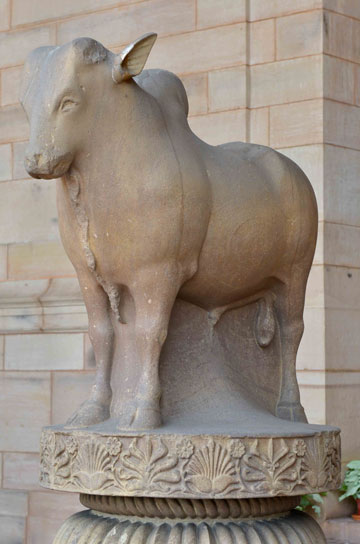Indian Antiquities
Bull Capital, Rampurva, c.3 B.C.E, Sandstone
Location: Rashtrapati Bhavan Forecourt
On top of the thirty-two broad steps alighting from the Forecourt towards the portico of Rashtrapati Bhavan is the Bull Capital of an Ashoka Pillar. It derives its name from the site of its find, Rampurva in Bihar. The naturalistic bull conveys life in both plasticity and volume. Sculptural refinement is discernible in his pronounced zebu hump. Its sculpting suggests a velvet soft touch to the stone while sharp ears in communion with quivering nostrils permeate a sense of alertness. Small eyes reveal innocence of this Bull, fittingly positioned atop a decorated band of floral ornamentation resting on an inverted lotus.
The Bull and the Buddha in the Ganatantra Mandap were both part of items sent to London in 1947-48 for an exhibition of Indian antiquities. On their return, the entire collection was displayed in the Rashtrapati Bhavan which was its home till 1960 when the National Museum Building was completed.
The Bull and the Buddha were retained in the Rashtrapati Bhavan as a result of personal interest taken by Pandit Jawaharlal Nehru, India’s first Prime Minister and C. Rajagopalachari , the first Indian Governor- General.









